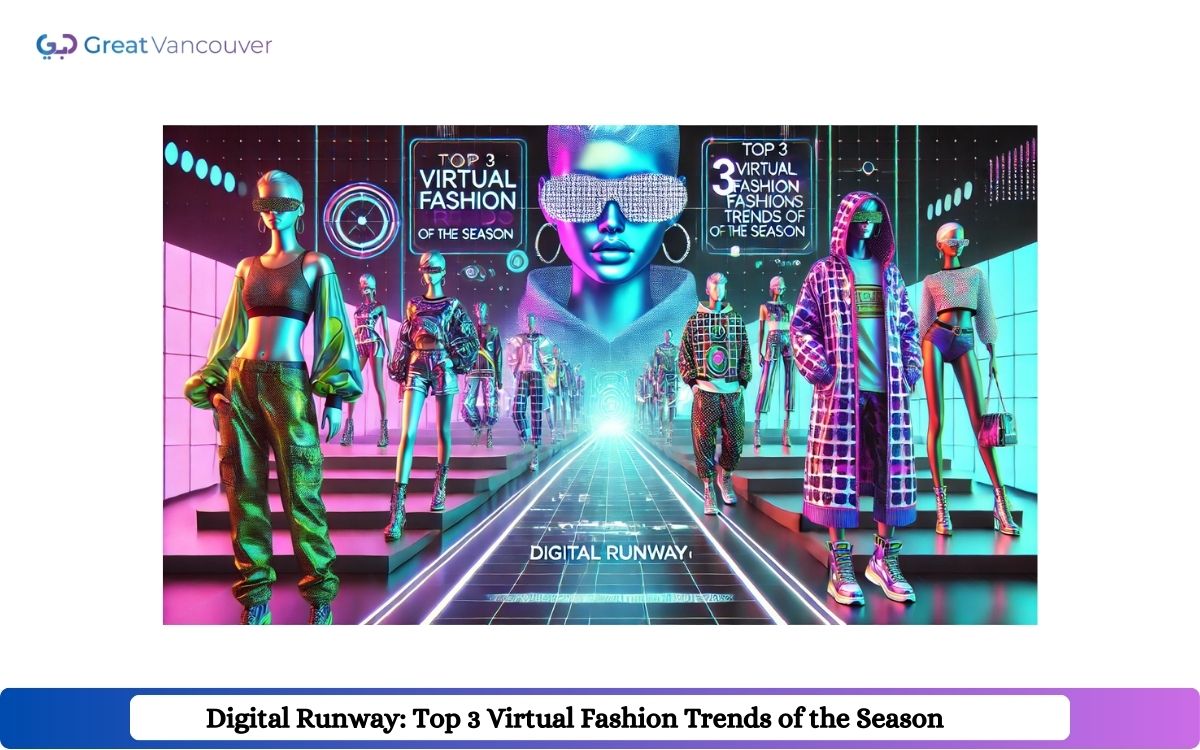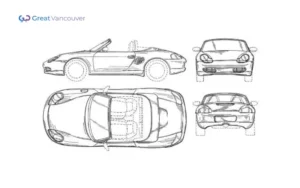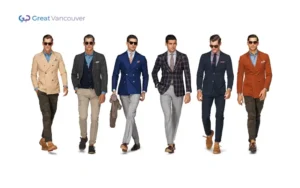Fashion is undergoing a digital transformation like never before. The runways are going virtual! This season’s virtual fashion trends are creating a new fashion experience. Digital clothing exists only online. Augmented reality (AR) changes how we try on outfits.
So, what’s driving this shift to virtual? Digital fashion is both sustainable and creative. It has no limits compared to traditional manufacturing. As more people embrace the digital world, it’s no surprise our clothes are too.
In this article, we’ll dive into the top three virtual fashion trends making a big impact right now. These trends are not futuristic. They’re already here, shaping how we shop, wear, and think about fashion.
Let’s Look into Virtual Fashion
Virtual fashion is no longer a futuristic idea—it’s a fast-growing part of today’s fashion landscape. With tech advances, brands and designers have a full digital toolbox. But what exactly is virtual fashion? And why are so many people drawn to these digital designs?
Let’s explore the top trends reshaping fashion. They offer new ways to interact with fashion beyond physical limits.
1. Digital Clothing: Fashion for the Online World
Digital clothing represents a fashion item that exists only in the virtual world. Designers create these designs with 3D modeling software. Avatars wear them, or users edit them onto photos.
Brands like The Fabricant and Direst have popularized this trend. They provide outfits for social media content, gaming avatars, and virtual events. Digital clothing is perfect for those who want to reduce their environmental impact. It lets them try unique styles that are impossible to wear in real life.
Why Digital Clothing Matters
Digital clothing redefines fashion. It lets people wear wild, surreal, or gravity-defying outfits. It’s like stepping into a fashion dream where there are no limits to what you can wear.
2. Augmented Reality (AR) Try-Ons: The New Fitting Room
The hassle of changing rooms or trying on clothes might soon be a thing of the past, thanks to AR try-on technology. AR allows users to use their devices to try on clothes and makeup virtually. Retail giants like Zara and ASOS have added AR features to their apps. These help customers buy with more confidence, without trying on items.
Benefits of AR Try-Ons
With AR try-ons, you get a sense of the item’s fit and style without needing to step foot in a store. This tech is more convenient. It also cuts returns. So, it’s a win-win for retailers and customers.
3. Virtual Showrooms: Shopping Without Limits
Virtual showrooms are immersive digital spaces. Customers can explore products in them like a store. But they are more creative and customizable. From 3D walkthroughs to interactive elements, these spaces elevate online shopping. They make it a unique and memorable experience.
Brands Making Use of Virtual Showrooms
Nike and Gucci are using virtual showrooms to engage customers. They often make the experience feel like a mini digital adventure. Shoppers can examine products from every angle and even design their items.
The Impact of Virtual Fashion on Sustainability
Virtual fashion is not about cool tech. It also offers solutions to some of fashion’s environmental problems. Digital clothes need no raw materials, no transport, and no no waste. They are a sustainable choice for the eco-conscious.
How Social Media Drives Virtual Fashion
Social media platforms, especially Instagram and TikTok, are powerful engines for virtual fashion. Influencers and celebrities often post about virtual clothes and digital effects. Their audiences are now exploring new ways to interact with fashion.
Digital Fashion’s Role in Gaming and the Metaverse
Virtual fashion integrates seamlessly into gaming. Players love to customize their avatars with unique outfits. In games like Fortnite and Roblox, users use digital fashion to show their identity in the metaverse. It adds personalization and self-expression to the gaming experience.
Virtual Influencers and Digital Models
A new wave of virtual influencers and digital models, like Lil Miquela and Shudu, has emerged. They blend fashion, tech, and storytelling. These virtual personalities endorse digital clothing and set trends. Their tech-savvy followers love them for it.
The Rise of NFT Fashion
NFTs (Non-Fungible Tokens) allow exclusive ownership of digital fashion. Brands like Dolce & Gabbana are venturing into NFTs. They offer buyers a mix of digital and physical fashion.
NFTs and Exclusivity
Owning an NFT fashion item means you own a one-of-a-kind, limited-edition digital collectible. It adds prestige and rarity to the digital fashion world.
Customization and Personalization in Digital Fashion
Digital fashion also enables a new level of customization. Many virtual fashion brands let customers customize their digital outfits. They can adjust colors, patterns, and shapes for a personal touch.
Is Virtual Fashion Accessible to Everyone?
Virtual fashion often requires specific technology or access to certain platforms. While it’s more mainstream, accessibility issues remain. This is true for people with limited access to digital tools or high-speed internet.
Challenges Facing Virtual Fashion
While virtual fashion is exciting, it is not without its challenges. Brands must address worries about data privacy and platform exclusivity. They must also tackle high digital production costs. These issues are barriers that prevent virtual fashion from achieving complete accessibility.
Future of Virtual Fashion
Technology advancements will grow the virtual fashion landscape. In the future, we may see more realistic digital wearables. There may be deeper integration with social media. even have virtual fashion weeks that we can join from home.
Conclusion
As the digital and real worlds merge, virtual fashion lets us express ourselves in new ways. It also allows for sustainable choices. Virtual fashion is changing how we engage with style. It lets us try on clothes with AR and collect unique NFT outfits. With technology on its side, this new frontier in fashion is only beginning.
FAQs
Q1. What is virtual fashion?
Virtual fashion is digital-only clothing and accessories. They are often worn by avatars or used in digital content.
Q2. How does augmented reality (AR) try-on technology work?
AR try-on tech uses smartphone cameras or smart mirrors. It overlays digital clothes or accessories onto a person’s live image. This provides a virtual fitting experience.
Q3. What are NFT fashion items?
NFT fashion items are unique, digitally owned, collectible pieces. They can be worn by avatars or used in virtual environments, like games and social media.
Q4. Is virtual fashion sustainable?
Yes, virtual fashion is sustainable. It uses fewer resources, produces less waste, and can reduce the need for physical samples. This lowers the industry’s overall environmental impact.
Q5. How can I try on virtual fashion?
You can try virtual fashion using apps with AR, virtual showrooms, or digital clothing stores. Some brands even offer AR try-ons directly through their websites.








